Walking The Line
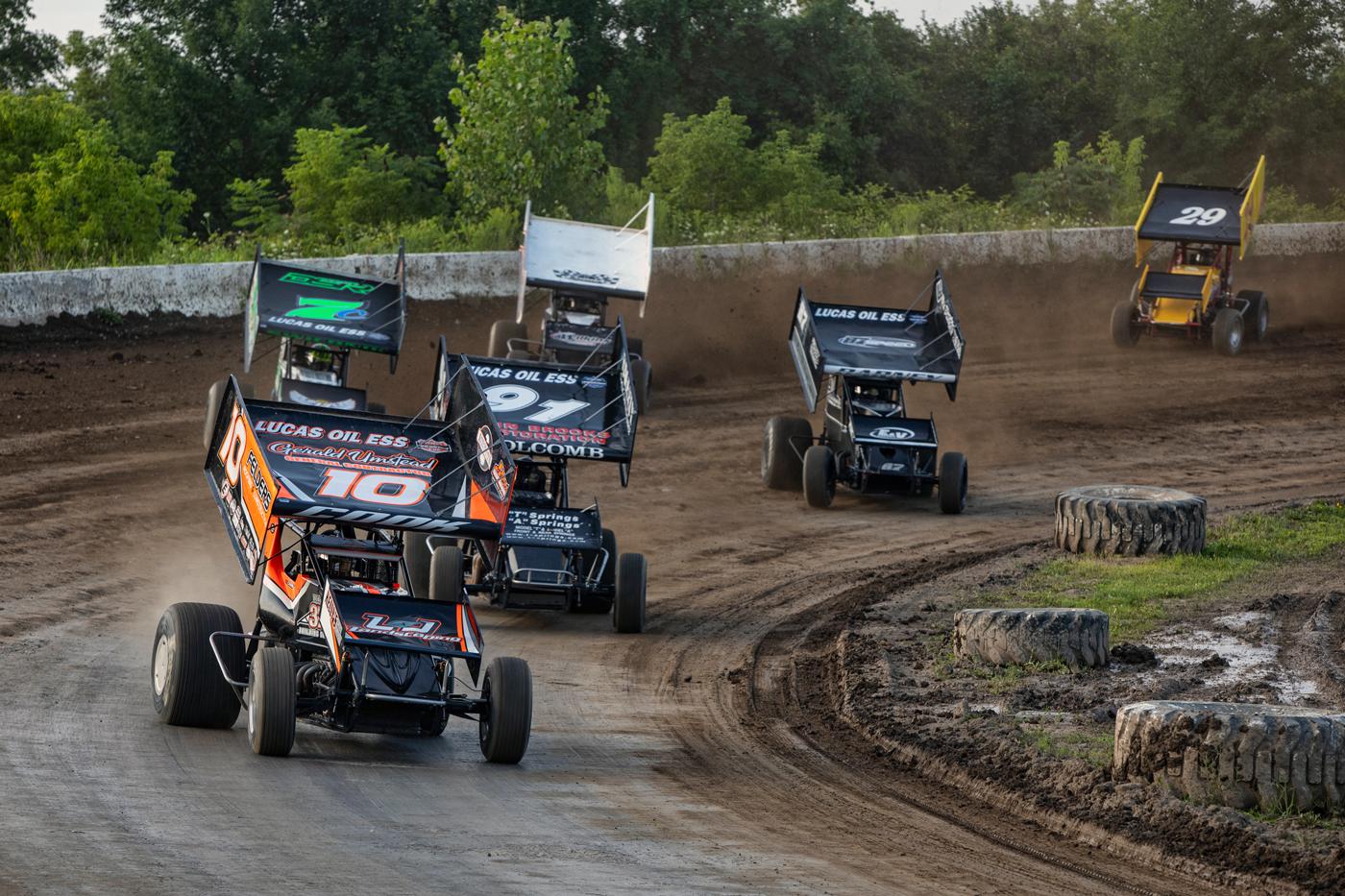
Photo courtesy of Lucas Oil Empire Super Sprints
With racing that straddles the local scene and top-league national series, regional sprint car and midget series thrive by offering racers a unique, best-of-both-worlds experience. But it’s not always an easy ride for the owners of these sanctions.
Every pond has its big fish and little fish. In the sprint car and midget ecosystem, regional series are the in-between fish. While big-league national series grab headlines and pack online streaming channels, midsize regional groups offer racing that’s typically a cut above the local-track level, without the dauntingly high-cost or brutal competition of top series.
Although the value of these mid-level racing organizations is clear, what isn’t so obvious is just how challenging it can be to keep them going year after year. Most regional series face stiff competition from other similar series, along with indirect competition from national series and unrelated entertainment options. Even high-school football games threaten fan turnout in some venues.
To survive, owners of regional open wheel series have to be nimble and aggressive. They need to sense the shifting moods, preferences, and dollars of their audience, and map that against the opportunities they see.
As a result, most of these series have evolved and morphed considerably over their history.
For some, that history spans more than eight decades. One of the series discussed here originated in the mid-1930s, amid the struggles of the Great Depression. Others are far newer, with ages barely in the double digits. But all have twisted and turned with the tides and fortunes of the people they serve, to bring the thrill of racing to those who appreciate it.
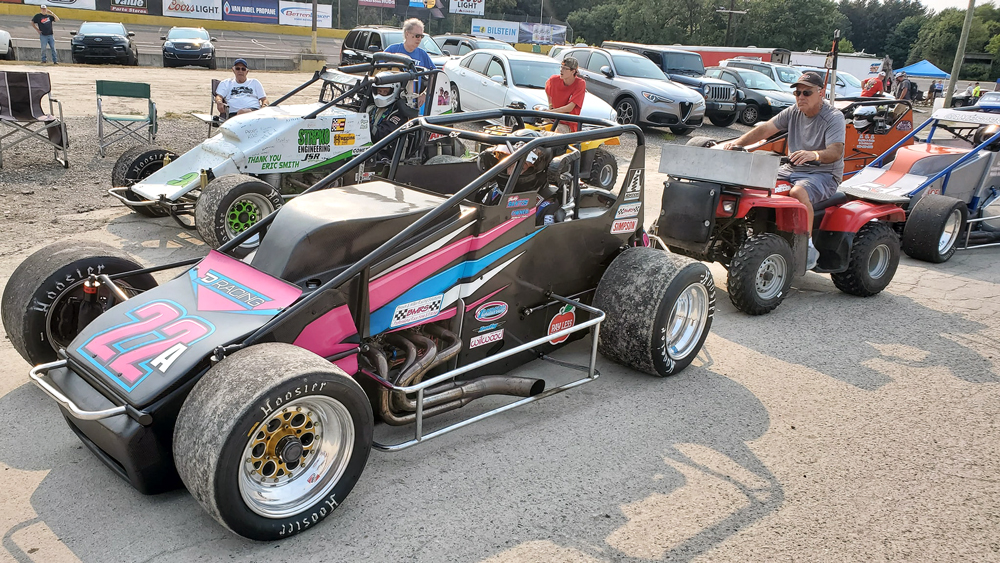
Choosing Boundaries
The core of any regional series is its geographic territory, often defined by the particular states they stake out as their own. Yet that isn’t always as straightforward or static as it might appear and can be affected by a number of different factors.
Foremost among those are the expectations and needs of racers. Most regional open wheel series look at where their racers are coming from and then build a roster of events that are within about an afternoon’s drive from that core group. But, like many things in racing, the question of money can take precedence in deciding the geographic boundaries of a regional series.
“Auto Value Bumper to Bumper auto parts stores is our title sponsor,” explained Tom Hartsell of the Cassopolis, Michigan-based 410 pavement sprint car series that bears the chain’s name. “It has stores in Michigan, Indiana, Ohio, Wisconsin, and Illinois, and we try to stay within the parameters of its territory. We have to be cognizant of our sponsor and the awareness of what their customers are getting out of it.”
While the pandemic appears to be slowly fading into history as this is written, its lingering influence still shapes where some series will compete this year. For instance, the New-York based winged 360 sprint car series Lucas Oil Empire Super Sprints is confining its schedule strictly to its home state to avoid complications that could arise from neighboring states reinstating harsh COVID-19 restrictions. In past years, the series had ventured freely into surrounding states, and even into Canada.
Ultimately, however, the decision of where a regional open wheel series will race is largely a matter of trying to strike an effective balance for fans and racers. “We’re trying not to oversaturate things,” said Chuck Miller, who runs the Lucas Oil Empire Super Sprints. “The most we’ll do is something like Fulton Speedway four times a year. The guys like to limit it to a couple times a season per track, so that it’s really special. It’s not just another class added on.”
Rivals and Partners
Perhaps more than any other factor, regional open wheel series are shaped by competition and territorial claims from rival series. In addition to the obvious need to respond to what other series are doing, the relationships between different open wheel series are often complicated. Things can change from cordial and cooperative to bitter and embattled practically overnight.
While struggles do occur, many regional open wheel series continue to cooperate with other tracks and series owners to find synergies that benefit both groups. When such relationships work, they can be an important part of grappling with the challenges that regional open wheel racing faces throughout the country.
“There are only so many cars and so many people,” said Rick Salem of the United Rebel Sprint Series, a winged 305 series based in Oberlin, Kansas. “It gets to be a zoo come scheduling time. We just don’t have enough cars to pass back and forth between tracks, so it’s just best that we work together.”
While regional open wheel series slug it out with other similar series for race dates, fans’ attention, and racers to put on tracks, there’s still the influence of big national series to consider. In some markets, national series aren’t a major factor. They don’t come through the area much, so regional series owners don’t feel any direct effects from them. At the same time, regional series often see themselves as offering a more accessible alternative to large national series.
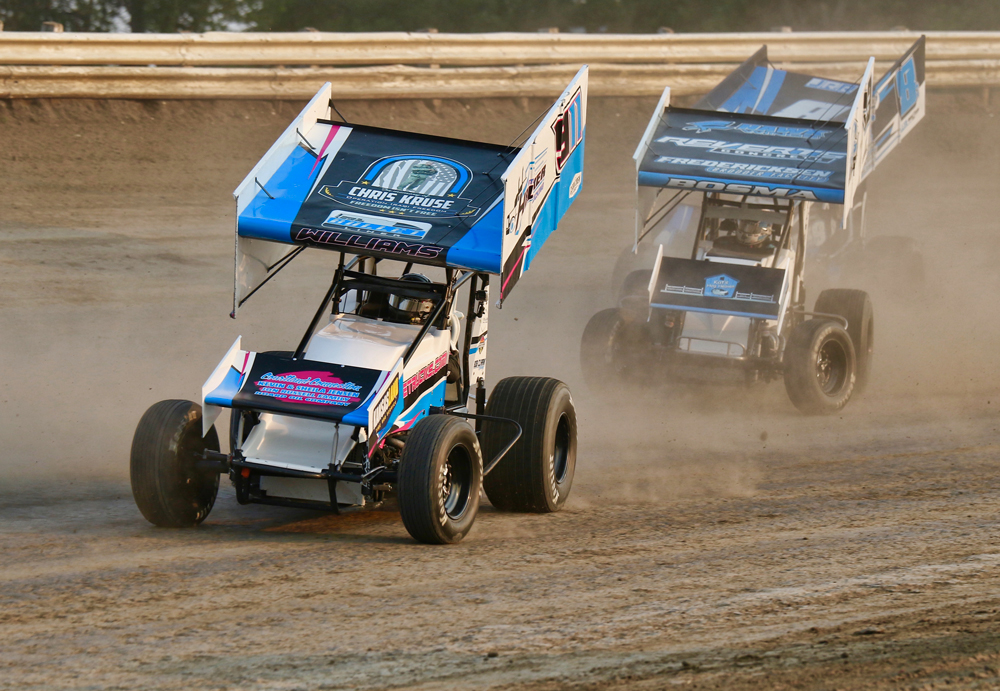
“I don’t worry about the World of Outlaws,” explained Aaron Fry of the Buckeye Outlaw Sprint Series (BOSS) and FAST on Dirt series, based in Chillicothe, Ohio. “That’s such a bigger scale. We offer the working man, a guy who has a regular Monday-through-Friday job, a place to go racing that’s affordable, and it’s obtainable. They can do it without having to call too many days off work or pull the kids out of school too much.”
Regardless of their exact relationship to national open wheel series, most regional series pay attention to what the big-leagues are doing and shape their series to take advantage of gaps in their racing, coverage, or geography.
“USAC and the All-Stars can do what they want to do,” said Fry. “I fill their niche where it becomes available. The All-Stars have moved out of our area. Half of their schedule this year is in eastern Pennsylvania or the New York/New Jersey area. They run fewer races in Ohio now than they ever have. That’s fine by me. The tracks that used to get All-Star dates, now they call me instead.”
At the same time, some series have a built-in relationship with a national series. Such is the case with the Rapid Tire USAC East Coast Sprint Car Series, one of several regional series operated under the USAC banner. While it’s part of the USAC brand, there are significant differences that keep them out of direct competition. “We don’t compete directly with USAC because we’re in Pennsylvania, and they’re in Indiana,” said Curt Michael, who runs the regional series. “We’re also a 360 series compared to them being 410. But we do take off the week they come into Central Pennsylvania for the Eastern Storm.”
Car Counts and Fan Figures
A racing series can’t exist without cars on the track. For some regional open wheel series, that’s relatively easy. They can reliably put 30 or more cars on track all season. Others struggle with single-digit car counts.
“Honestly, our car counts were down a little bit last year just because of the way everything is going on in the world,” noted Salem. “But we should be fine. We still pull in enough cars to put on a good show—20, 25 cars usually.”
“It’s been a real struggle the last couple years with car counts—I mean, astronomically a nightmare,” said Hartsell. “We would start calling on Sunday and finish on Friday, and sometimes only nine cars would show up. That’s hard to deal with. We can’t sell a top-notch program for premium dollars when we’re only getting nine or 10 cars there.”
Fans in the stands are the other essential ingredient in the health of a regional open wheel series. The sources we spoke to generally reported solid fan attendance at most races. But at the same time, they also noted that they’re battling with each other for the attention of a finite audience.
“Unfortunately, with open wheel competition, it seems that everybody’s fighting right now as far as drawing a broad fan base to their tracks,” observed Hartsell. “The crowd that really was into open wheel is an older crowd now, and none of the younger adults seem to be catching on.”
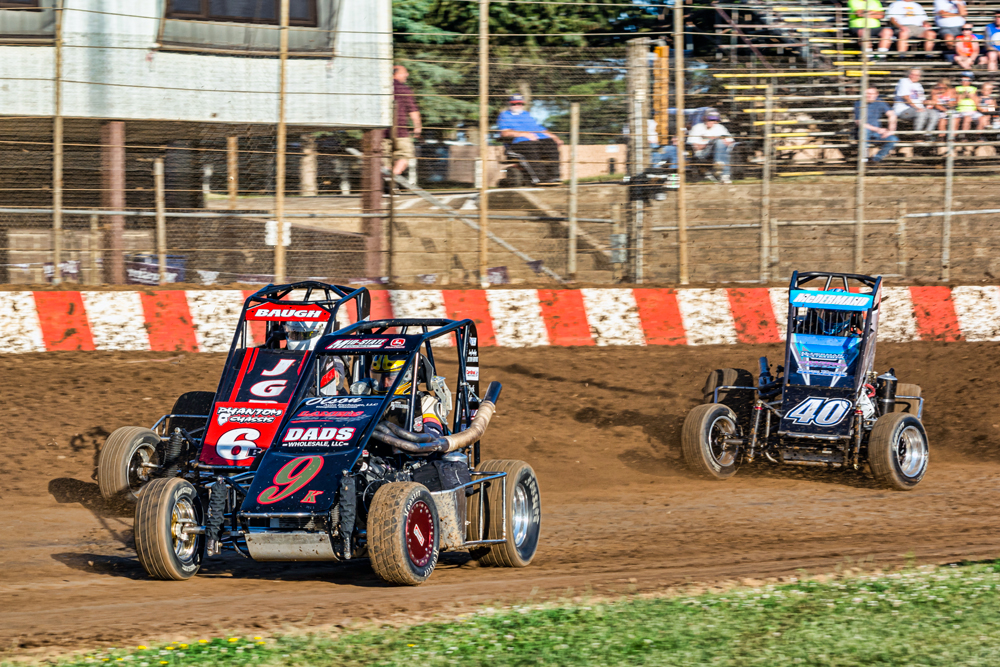
Regional sanctioning bodies work hard to get the word out and bring their message to fans. To do that, all the sources we spoke to have essentially abandoned traditional advertising methods. “Years ago, we used to do a coupon ad in a local newspaper—bring in your ad to get five bucks off or whatever,” recounted Hartsell. “We didn’t get one single coupon back. So we quit wasting money doing that.”
Instead, Hartsell and all of the other series owners we spoke to said they’re channeling their efforts into social-media platforms such as Twitter, Facebook, and Instagram, coupled with regular email blasts. Besides the flexibility and speed of these platforms, their low cost makes them well-suited to changing conditions and limited resources. “We do as much social media as we can,” explained Quinn McCabe of the Badger Midget Auto Racing Association, Sun Prairie, Wisconsin. “We’re always trying to promote and draw people to it.”
Unfortunately, this form of promotion does have a significant shortcoming built into it: The aging demographic that regional open wheel racing relies on generally isn’t attuned to social media. With traditional advertising being ineffective in most markets, this can leave gaps in the promotion of races. “That older generation is hard to reach,” said Fry. “It’s another problem we fight.”
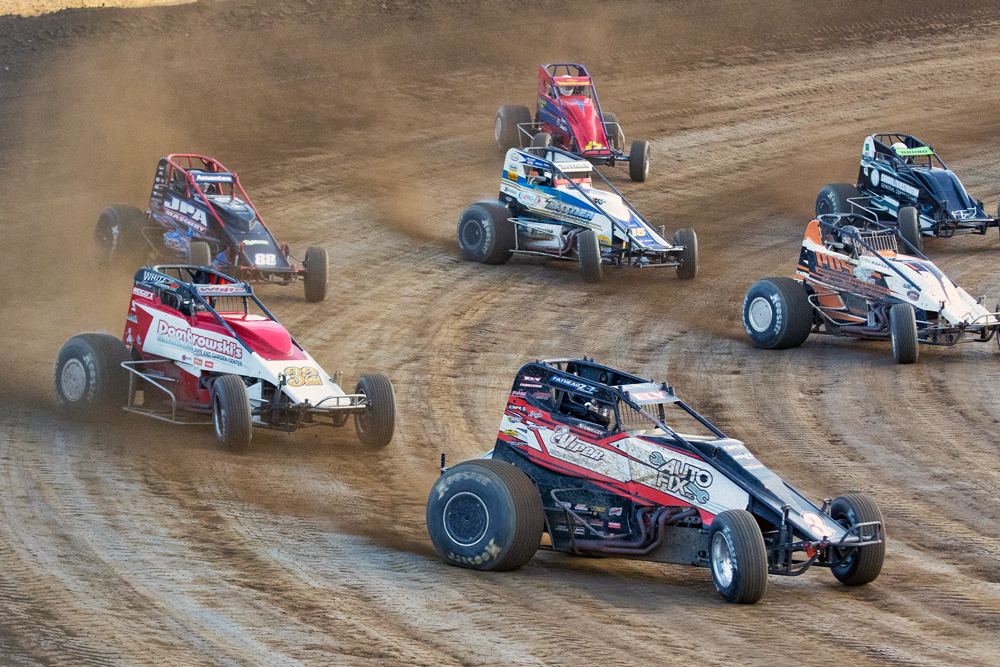
Along with social media, streaming on such platforms as DIRTVision, FloRacing, and The Cushion has become increasingly important for series owners as a means of bringing their series to a wider fan base and keeping them engaged. Many regional open wheel series don’t have the reach to command the attention of bigger streaming platforms. Instead, they often have to depend on the tracks where they race to get their races streamed online.
“We don’t have anybody streaming our races full-time,” said Michael. “But most of our races are streamed. We’re on Flo and DIRTVision a lot because we go to tracks that already have deals with them.”
Dollars and Sense
The cost required to go racing is without question one of the biggest concerns for owners of regional series. Out-of-control expenses can limit car counts, reduce competition, and endanger a series altogether.
One of the most effective means of limiting costs is by using a cheaper engine package. While that can ultimately keep a series viable and healthy for racers, the move isn’t always welcomed initially. For example, Salem faced considerable resistance when launching his United Rebel Sprint Series around the low-cost 305 Chevy spec engine.
“When I started this series 17 years ago, everybody laughed at me,” he recalled. “But I could see that the cost was getting out of hand, not only for racers, but for the tracks out here in rural Kansas. They just can’t afford some of the big purses that the 360 and 410 cars are charging. I just wanted to keep sprint car racing going around here—give the racers and race tracks a break.”
For the Wisconsin-based Badger Midgets, the move to a less expensive engine shook the local midget community to its core. The series began in 1936, and it had a long tradition of midget racing in the Midwest. But this legacy also made many local competitors highly resistant to moving to cheaper, less exotic engine platforms.
“In 2015, we decided to shake the tree up a little bit,” said McCabe. “We were running the Fontana and the Esslinger, along with Chevys, Fords, and Toyotas. We were down to six cars in some races. We were begging everybody to come up here and race. So we went to a 2.4-liter production-based engine to cut costs. Now, most guys are running Honda, Mazda, and Chevy. And all three win.
“We had a lot of naysayers in the group when we did that,” McCabe continued. “Everybody laughed at me and called me everything they could think of. Now, starting our seventh year, it’s still getting bigger and bigger. Last year, we averaged 27–28 cars a race.”
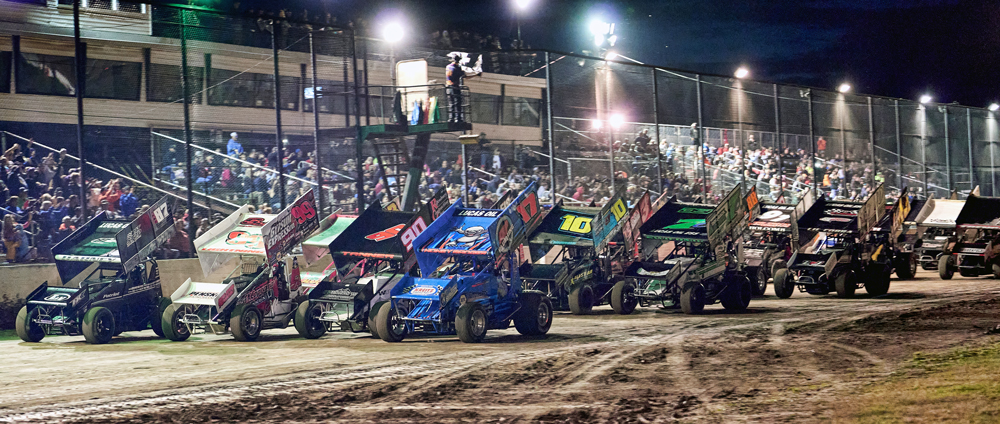
One way to limit engine costs is to simply go wingless. Without barn-door-size aerodynamic devices on the roof, sprint cars can’t handle a lot of power, making wingless cars essentially free of costly engine-development escalation. That said, the question of wing versus non-wing is usually more a matter of racer and fan preference than cost control. Nonetheless, it brings powerful savings that are hard to ignore.
“In the 12 years we’ve been doing this, we’ve never checked motors,” explained Fry, who owns the non-wing BOSS sprint series. “Nobody does in the non-wing world. If a guy wants to build 1,000 horsepower to run wingless with, he’s more than welcome to. It’s often a detriment to have more horsepower. Most guys are looking for ways to detune the motor to slow the wheel spin down.”
Some series are taking a close look at the length of races. They’ve found that by carefully reducing the number of laps in some races, they can significantly cut costs while still providing fans and racers with good, on-track action.
“We did a little study into the length of races,” said Fry. “In 10-lap heat races, we found that most of the passing happens in the very first lap. The next most passing comes on lap two. By laps nine and 10, there’s usually no passing at all. So we cut our heat races to eight laps instead of 10. Shortening all the heat races by two laps over a whole season means another night of racing on an engine before a rebuild. It also helps save that right rear tire for later in the night.”
Pennywise Passion
Though they’re well-intentioned, specific cost-cutting methods that are applied by regional open wheel series can have unintended consequences. In many cases, what appears to be a sound move to reduce expenses for racers ends up costing more in the long run. And even when cost-cutting measures do work, racers are always going to be racers. Any extra money they end up with will probably only go back into making their car faster anyway. This is true even in budget-oriented 305 series.
“It’s never going to be cheap,” observed Salem. “Some of these injection systems they’re making strictly for the 305 now are $7,000, $8,000, $9,000. I teched a motor here a while back in Dodge City, Texas. It had carbon-fiber injectors. I asked the guy, ‘What is this?’ He just looked at me and said, ‘It’s expensive is what it is.’”
Prize money is the other big part of the expense equation, and it’s something that most regional open wheel series wrestle with. Most of the sources we spoke with expressed the need for bigger and better sponsors to boost purses. “The toughest thing right now is sponsorship—raising money,” noted Miller. “We’ve been at the same purse point for about 10 or 12 years. We really need to go up a little bit to help the racers more if we can. But by the same token, we don’t want to price ourselves out of racing.”
Unfortunately, most regional series find it difficult to make a compelling business case for potential sponsors based solely on numbers. It’s really something that has to connect on an emotional level as well.
“To get sponsors, you pretty much have to know someone,” observed Michael. “That’s how we got hooked up with Rapid Tire Service. A racer knew them and brought them to us. And we’re happy to have them. It’s hard to get sponsors like that if they don’t know anything about racing.”
These cost issues are playing out in an economy that’s less than ideal. Most of the country is facing widespread inflation, shortages of goods, and a general uncertainty from the pandemic, the Ukraine war, and other global catastrophes. The most obvious barometer for this unease is what people pay at the gas pump.
“What I’m really worried about this year is the price of fuel to get to the track,” said McCabe. “I don’t see it going away. That makes me nervous right now. Hopefully, the diehard race fans will get out there anyway.”
Despite the many challenges that regional open wheel series face nowadays, they continue on undaunted, with passion and perseverance that drives them to overcome obstacles and bring their sport to people who deeply care, week after week, year after year.
Just like any segment in motorsports, it’s a labor of love. And that’s not necessarily a bad thing.
“As far as our little series, we’re getting by,” said Fry. “We’re putting on good shows. The fans who know us, love us. We’ve got some hardcore fans who follow us in just about every race we go to. If they can’t make it, they’re watching live on The Cushion. We’re a great little regional series.”
Sources
Auto Value Bumper to Bumper Super Sprint Series
supersprints.com
Badger Midget Auto Racing Association
bmara.com
Buckeye Outlaw Sprint Series / FAST on Dirt
buckeyesprints.com
Lucas Oil Empire Super Sprints
empiresupersprints.com
Rapid Tire USAC East Coast Sprint Car Series
usaceastcoastsprintcars.myracepass.com
United Rebel Sprint Series
unitedrebelsprintseries.com
 MEMBERSHIP LOGIN
MEMBERSHIP LOGIN JOIN PRI
JOIN PRI


